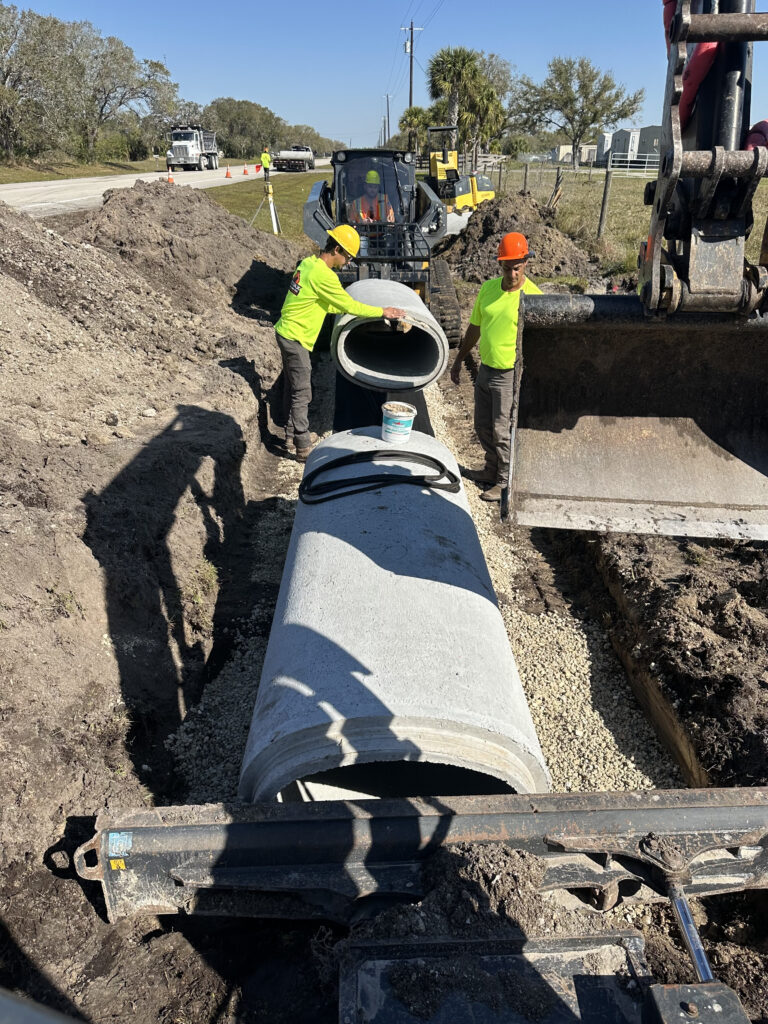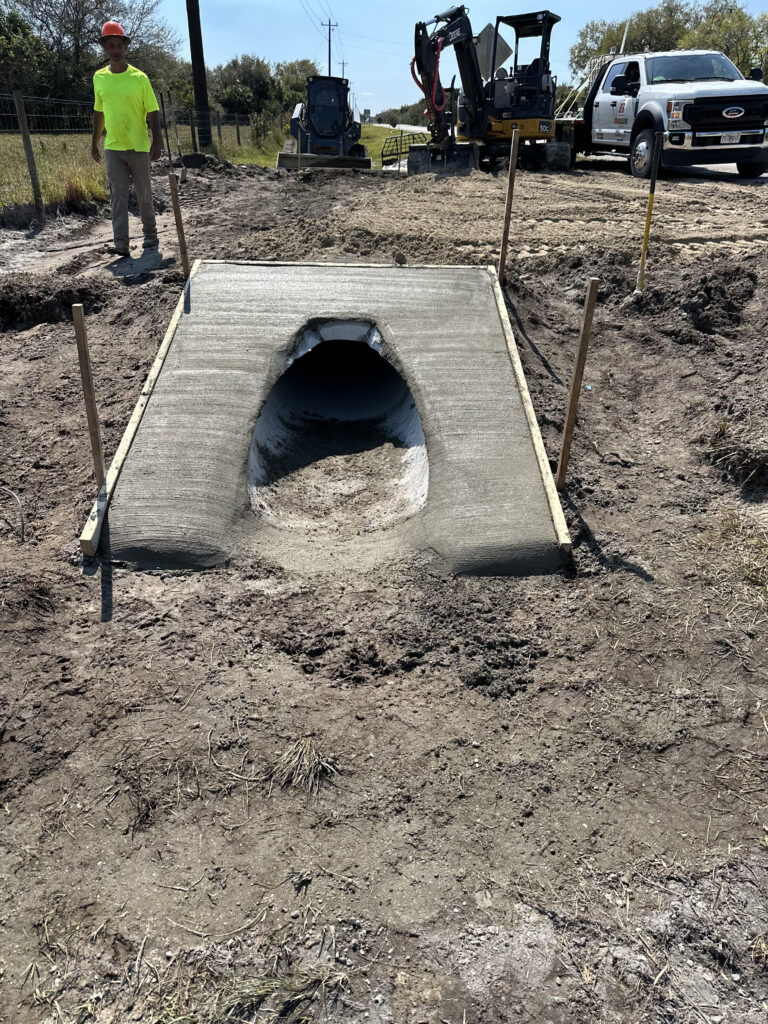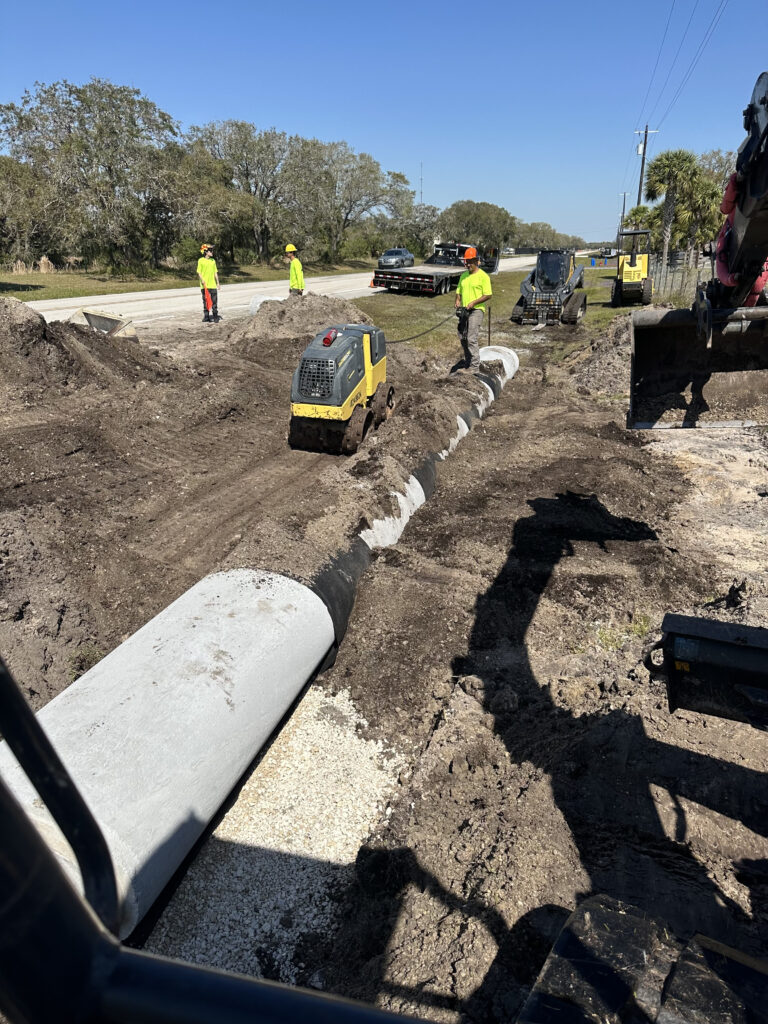Fort Myers Sewer Construction
Get a Quote For Your Project
This region requires careful consideration due to its high water table, the presence of sensitive ecosystems, and the need for robust infrastructure to support growing populations.
Here’s how Fort Myers sewer construction is integrated into these initial stages:
Fort Myers Sewer Construction Planning and Design:
The initial phase entails thorough planning and designing with due consideration to the unique environmental and soil circumstances in Southwest Florida.
Engineers need to ascertain the most suitable type of sewer system, perhaps a conventional gravity sewer, a pressurized sewer system, or a vacuum sewer system, based on topography and groundwater levels.
Sewer Permitting:
In consideration of the environmental sensitivities, it is essential to secure the permits required from local, state, and even federal governments.
This entails adherence to the regulations and policies of the South Florida Water Management District and the Florida Department of Environmental Protection, which exist to safeguard against any adverse impacts to local environments, specifically water bodies and wetlands.
Installation of Sewer Infrastructure in Fort Myers:
This entails backfilling, laying pipes, and trenching.
The material of the pipe (ductile iron, concrete, or PVC) is selected depending on soil conditions and project requirements.
Where there is high groundwater, dewatering of trenches is done to provide safe and dry working conditions for the workers and avoid pipe flotation.
Installation of Fort Myers Sewer Lines:
This site development service involves trenching, laying pipes, and backfilling.
The type of pipe material used (PVC, concrete, or ductile iron) is chosen based on soil characteristics and the specific needs of the project.
In areas with high groundwater levels, dewatering of trenches may be necessary to ensure safe and dry conditions for workers and to prevent pipe flotation.
Connection to Main Lines or Treatment Facilities:
The new Fort Myers sewer construction lines are connected to existing main lines or municipal treatment facilities. This step requires precision to ensure leak-free connections and may involve additional infrastructure like lift stations if the topography prevents gravity flow.
Testing and Commissioning:
Once installed, the new sewer lines are tested for integrity and proper flow.
This might include pressure testing, leak testing, and flush testing to ensure that the system operates as designed without leaks or blockages.
Restoration:
Post-installation, the focus shifts to site restoration.
This includes replanting vegetation and restoring any disturbed surfaces to minimize the impact on the local environment and to comply with land use and aesthetic standards.
Ongoing Maintenance:
After Fort Myers sewer construction, routine maintenance is critical to prevent blockages, leaks, and other issues.
Regular inspections and cleanings help maintain the functionality and longevity of the sewer system.
The unique environmental conditions that come with Fort Myers sewer construction dictate that site prep and land clearing be handled with precision and environmental conscientiousness to prevent contamination and ensure sustainability.
Related Services
- Learn more about our other services, including Fort Myers storm management
- Return to the home page to learn more about Fort Myers land clearing
- Sewer Construction




Fort Myers Sewer Construction FAQ
What are the initial steps taken in Fort Myers sewer construction?
Before sewer construction can begin, site preparation entails clearing the land of vegetation, debris, and any existing structures. Site selection also considers soil composition and water table levels, which are determined by soil testing to ensure proper design and placement of sewer lines. Furthermore, it is important to ensure that the project is compliant with local regulations regarding land use and environmental impact.
How is the layout of sewer lines determined in areas prone to high groundwater levels, like Southwest Florida?
What are the environmental considerations when constructing sewer systems in sensitive ecosystems?
Construction in sensitive ecosystems is minimal if there is habitat degradation, which can include the use of trenchless technologies like directional drilling to bore through the earth and install sewer lines with minimal excavation. Control of erosion and sediment must be done properly so as not to pollute waterways during construction of the Fort Myers sewer.
How do builders handle the intersection of new sewer lines with existing underground utilities?
Intersection with existing utilities requires careful coordination and mapping to prevent damage. Before excavation, utility location services must be employed to identify and mark all existing utilities. Techniques such as hand digging or vacuum excavation are often used near these intersections to prevent damage to existing infrastructure.
What challenges does the rainy season in Southwest Florida pose to sewer construction, and how are they managed?
What long-term maintenance considerations should be planned for during the initial design and construction of sewer systems?
Long-term maintenance considerations include designing sewer systems with accessibility for inspection, cleaning, and repairs. Manholes should be placed strategically for ease of access, and the systems should be constructed with durable materials that resist corrosion and degradation. Regular maintenance schedules should be established, and future accessibility for equipment should be ensured in the design.